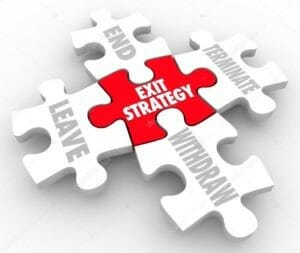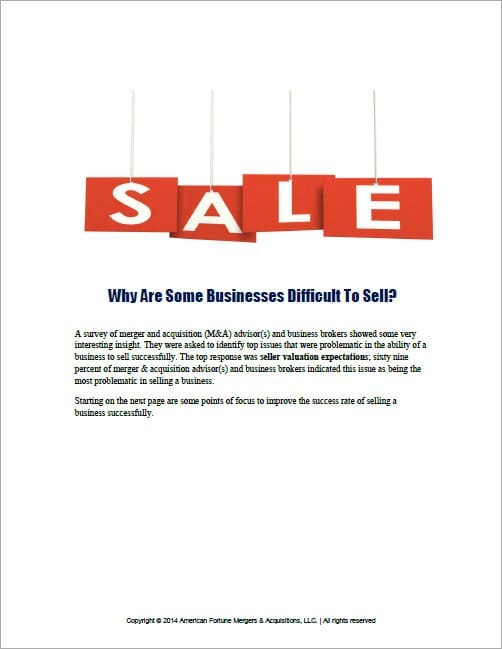Benefits of Exit Strategy Planning
Léon Danco, the pioneering family business advisor, once wrote, “The toughest thing for the entrepreneur to realize is that time is constantly running out. Most owners don’t plan because they don’t think they are ever going to retire or die.” If you don’t have a business exit plan implemented by Exit Strategy Planners, the future of your business, your personal financial security, and your employees’ jobs will all be at risk.
In this article, you will learn about effective ways of business exit planning with the assistance of exit strategy planners
A disciplined, systematic approach to accomplishing your objectives will result in an orderly and successful exit from your business. Investing time now in exit planning will give you peace of mind as well as significant financial gains.
If you chose to sell your business, plan well in advance. It is imperative that you have an updated business valuation performed before placing your company on the market. This will help you set a realistic, defensible asking price. Keep in mind that it can take up to two years to sell your business.
Several types of buyers may be interested in your business strategic buyers, industry buyers, financial buyers or private equity buyers. Your marketing efforts should be targeted to buyers who will see the most value in your business.
There Are Six Value Drivers That Raise Value And Marketability of Your Business.
Your business exit strategy should be based on a solid understanding of what drives your business value as well as accurate benchmarks of the value of your business. Value drivers are the characteristics that reduce the risk of owning the business or increase the probability that the business will grow in the future. If these characteristics are present in your business, a buyer will pay a premium price.
Management Team. Too many business owners make the mistake of retaining complete control, which makes it hard to separate them from the business. Designate a manager or assemble a management team that is capable of running the business now and after your exit from the business.
Systems and procedures. Like a strong management team, reliable systems and well-documented procedures will help sustain the growth of a business and ensure a smooth exit and transition to a new owner. Write a formal business plan, create written job descriptions, develop a systems manual and organize customer and supplier files. Consider investing in technology and software tools that will help streamline current procedures.
Customers and suppliers. To protect yourself from the loss of a single customer or dominant supplier, diversify your customer and supplier base. No one customer should account for more than 20% of your total sales. This may require you to invest in additional capacity that will allow you to broaden your customer base. Taking the time to investigate your suppliers is a prudent strategy and may also reduce your cost of goods.
Facilities and equipment. Make sure your facilities are up to code and convey the image you want to project. Invest in new equipment and maintain service records.
Financial discipline. Businesses are valued based on the health of their historical income statements as well as five-year projections that are substantiated. The existence of financial controls supports an owner’s profitability claims. It is extremely important that your company’s financial records be accurate and verifiable. A potential buyer or lender will want to carefully review them.
Growth strategy for effective exit planning. Your ability to demonstrate a realistic growth strategy is vital to the perceived value of your business. Creating a pro forma statement with projected discretionary earnings is the best way to communicate future opportunities. Make sure to document your assumptions and clearly outline new products, marketing efforts, increased demand, industry dynamics and other factors that affect growth.
A business valuation is a data-supported document that benchmarks the current market value of your business. Owing to the historical use of unreliable valuation approaches, we recommend you use an unbiased and certified business valuation firm. If the valuation proves insufficient to support your long-term financial objectives, you should devote a significant effort toward focusing on the key value drivers and the necessary action steps to build value. If the valuation is in line with your expectations, you should take steps to preserve your business’s value and occasionally have it re-valued. Industry dynamics and the health of the economy are external factors that can greatly alter the market value of your business and thus impair your exit from the business.
Profitability Analysis. Once you understand what your value drivers are, and you know the value of your business, your next step should be to have Exit Strategy Planners perform a profitability analysis. To perform a business analysis, start with conducting a SWOT analysis. Identify the company’s true strengths, known weaknesses, growth opportunities and any threats to the future of the firm. Strengths and weaknesses are internal factors. Opportunities and threats are external factors.
Next, you should determine your company’s profitability drivers. This starts with understanding where you make and lose money. It’s easy to equate growing revenues with making money, but unless your operating margin is keeping pace with your revenue growth, you might actually be facing a decline in profitability.
To understand the profitability picture, you must analyze the cost structure and contribution margin of each business component separately. A component may be a brand, product, channel or customer.
One mistake that companies make is to allocate a large percentage of their cost structure to “shared costs.” If all costs are not directly attributed to individual components, profitability is likely to be overstated in some areas and understated in others. This could cause management to make poor business decisions, such as increasing their sales with a high-volume, higher-profit customers. Keeping a good handle on these factors will help maintain and grow business value as well continually prepare the business for a successful business exit.
Consider the following initiatives once you have determined profitability drivers:
1. Re-evaluate all products and services. Consider dropping low volume products or services. Keep them only if their customer reach is strategic in terms of loyalty and satisfaction. Compare their contribution margin to that of all other products and services. Evaluate their system-wide operational impact on manufacturing and distribution productivity.
2. Realign customers. Renegotiate pricing or completely eliminate unprofitable customers to improve the low-cost/high-cost mix. This may allow for the consolidation of facilities, reduction of manufacturing lines and more efficient distribution. Focus resources on profitable accounts with high growth potential.
3. Set long-term strategy. Share your findings with your leadership team so that all future decisions will be based on true costs, system-wide impact, and the most favorable profitability strategies.
Action Exit Planning Strategy. After completing the steps suggested above, work with your Exit Strategy Planners to create a list of action items, with projected completion dates, that will maximize your business value and increase your profitability. Careful business exit planning will allow you to transition your company without jeopardizing either near-term performance or future growth. Your goal should be to move from a revenue culture to a profit culture and to strengthen the business in the areas of the six value drivers.
Set aside time with your Exit Strategy Planners to review your business exit or succession action plan twice a year and compare your progress against your short, mid and long-term objectives. Make adjustments and work with external advisers to stay on course.
Keep in mind that the sale of a business can suddenly create significant liquid assets for the owner. Without a wealth management plan, there can be unwanted consequences. Tax and estate planning should also be essential elements of your exit strategy or succession planning.
For more information about business exit planning speak with one of our Exit Strategy Planners at 502-244-0480.
Posted by Brian s. Mazar, CBI, MBA
American Fortune







